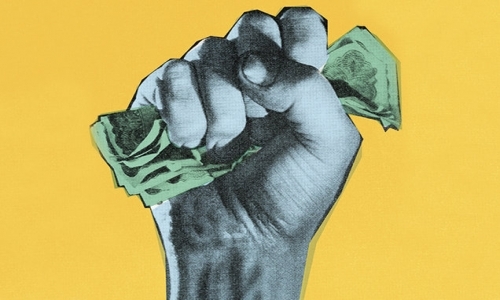Forty-five percent streaming growth edges recorded music revenue to $15.0 billion.
The global recorded music business reached an important tipping point in 2015: Digital services now account for 45 percent of recorded music revenue and outstripped physical revenue for the first time, according to numbers released Wednesday by the global trade body IFPI.
The most momentum happened with subscription services. Subscription revenue, excluding revenue from some services’ free tiers, jumped $58.9 million to $2 billion. The number of subscribers grew 66 percent to 68 million. The number of new subscribers, 27 million, was twice the 28-million subscriber gain in 2014 and over three times the growth in 2013.
The total value of digital sales amounted to $6.7 billion (up 10.2 percent year-on-year) with worldwide streaming revenues (including premium and ad-supported) climbing by a massive 45.2 percent to total $2.9 billion. That was enough to help offset a 10.5 percent decline in download sales ($3 billion) and 4.5 percent fall in physical formats.
Meanwhile, performance rights revenues increased by 4.4 percent to $2.1 billion, making it one of the most consistent growing revenue sources. Performance rights now represents 14 percent of the industry’s global revenue. Streaming accounts for 19 percent of global sales, up from 14 percent in 2014. Digital revenues now account for more than half the recorded music market in 19 markets, with the total number of paying subscribers now standing at 68 million, up from 41 million, according to IFPI figures.
Ad-supported streaming services did fare as well. Revenue from pure ad-supported services, not including hybrid paid-free services like Spotify and Deezer, rose just 11.3 percent to $630 million. The IFPI called this the difference a "value gap" that results from royalty rates that are "miniscule" compared to subscription service. "The market distorting value gap must be resolved if music is to thrive in the long term," the report states.
In criticizing ad-supported services, the IFPI joined a growing list of trade bodies and music company executives to criticize YouTube for paying royalties that are relatively low when considering its popularity. The RIN report argues YouTube distorts its negotiations with labels by hiding behind the DMCA “safe harbor” rules that limit the liability of online intermediaries from the infringing actions of their users. The result, the IFPI argues, is YouTube can use an “act first, negotiate later” that “fundamentally distort[s] the negotiation process.”
What’s the amount of the “value gap”? The IFPI calculates Spotify’s average royalties per user was $18 in 2014, the latest year for which data is available. YouTube’s ARPU was “less than $1,” the report states.
Eliminating or significantly reducing the value gap won’t be easy. As a comparison, Pandora’s ARPU was $1.76 in the fourth quarter of 2015, according to its latest financial statement. One could argue Pandora can improve its ARPU -- and must to reach profitability -- but the company is a closer corollary to YouTube than Spotify, which is primarily a subscription service. Both Pandora and YouTube are primarily free, ad-supported services. In any case, as the European Commission determined last year, a value gap exists and rights owners are pushing hard to lessen it.
Additional reporting by Starlight PR








